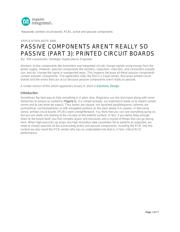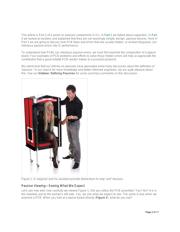下载

Keywords: printed circuit boards, PCBs, active and passive components
APPLICATION NOTE 5800
PASSIVE COMPONENTS AREN’T REALLY SO
PASSIVE (PART 3): PRINTED CIRCUIT BOARDS
By: Bill Laumeister, Strategic Applications Engineer
Abstract: Active components like transistors and integrated circuits change signals using energy from the
power supply. However, passive components like resistors, capacitors, inductors, and connectors actually
can, and do, change the signal in unexpected ways. This happens because all these passive components
contain parasitic components. This application note, the first in a 3-part series, discusses printed circuit
boards and the errors that can occur because passive components aren't really so passive.
A similar version of this article appeared January 9, 2014 in Electronic Design.
Introduction
Sometimes the best way to hide something is in plain view. Magicians use this technique along with some
distraction to amaze an audience (Figure 1). It is simple actually: our experience leads us to expect certain
norms and to see what we expect. Thus boxes are square, not squished parallelograms; spheres are
symmetrical, not hemispheres or with elongated portions on the back where it is unseen. In that same
sense, printed circuit boards (PCBs) seem straightforward. You think that you can see everything going on,
but you are really only looking at the circuitry on the exterior surface. In fact, if you delve deep enough
down to the board itself, you find complex layers and structures and a myriad of things that can go wrong
here. When high-precision op amps and high-resolution data converters fail to perform as expected, we
need to closely examine all the surrounding active and passive components, including the PCB. Into this
context we also insert the PCB vendor who has an understated role that is, in fact, critical for IC
performance.
Page 1 of 11








